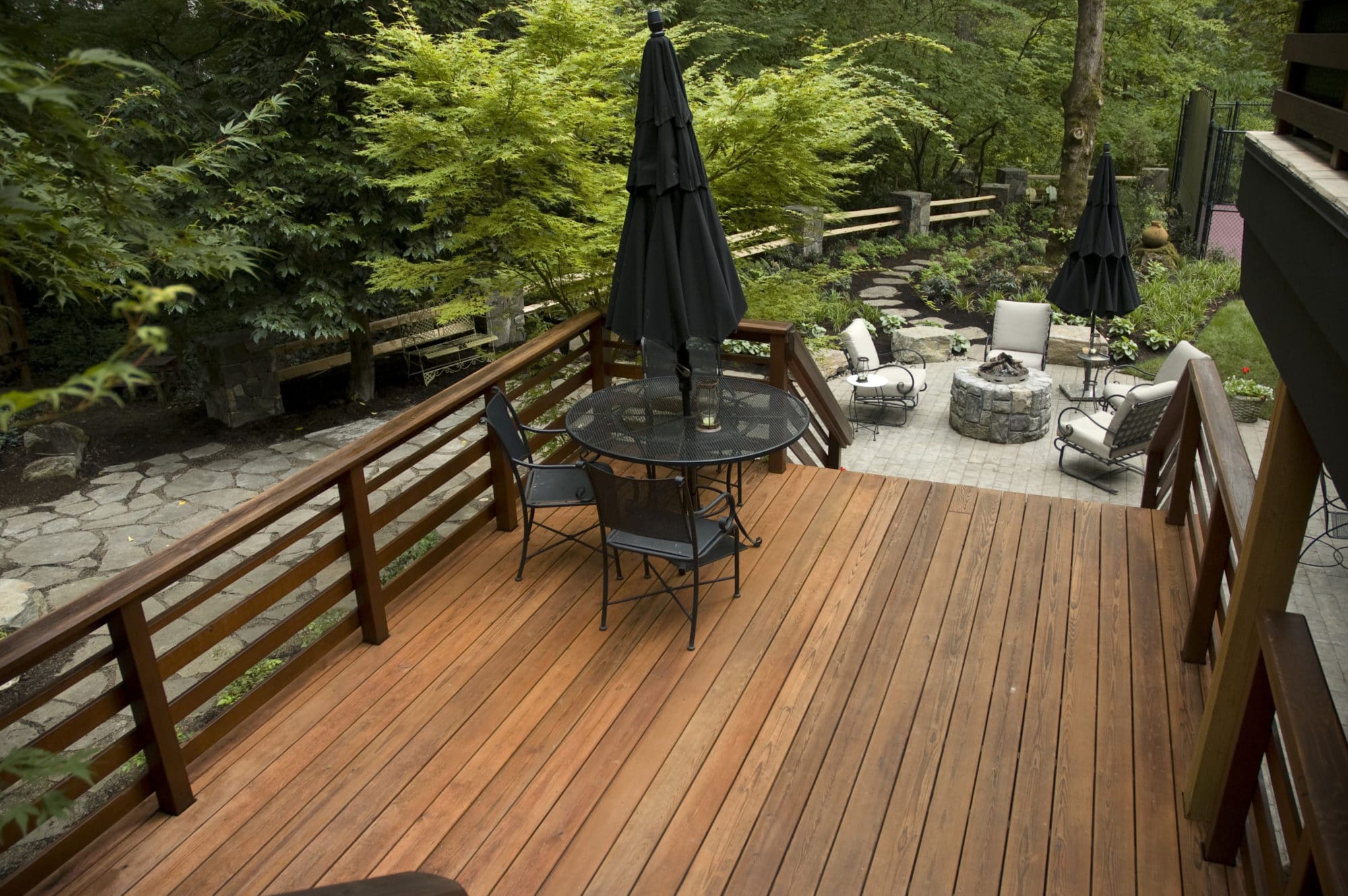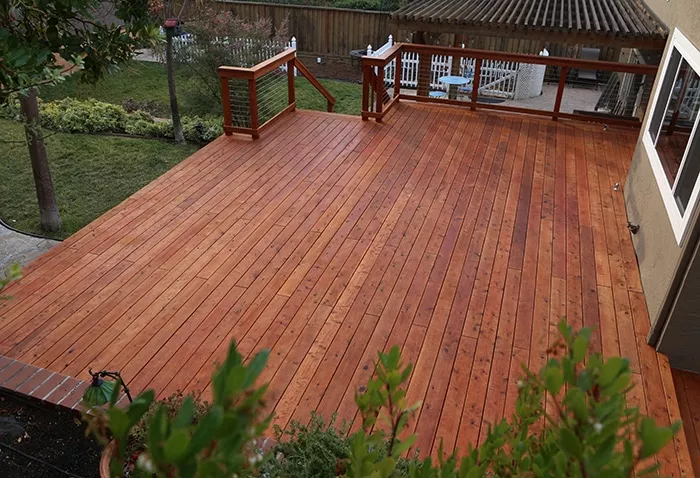
Sleek And Simple Redwood Deck | Photo Credit: California Redwood Association
As a licensed contractor, this is the advice I share with my homeowners who are interested in a deck:
Cost
One of the many benefits of working with natural wood is its lower upfront cost. You can install a natural wood deck for less money than you’d spend on the alternative – a great incentive for taking the natural route.
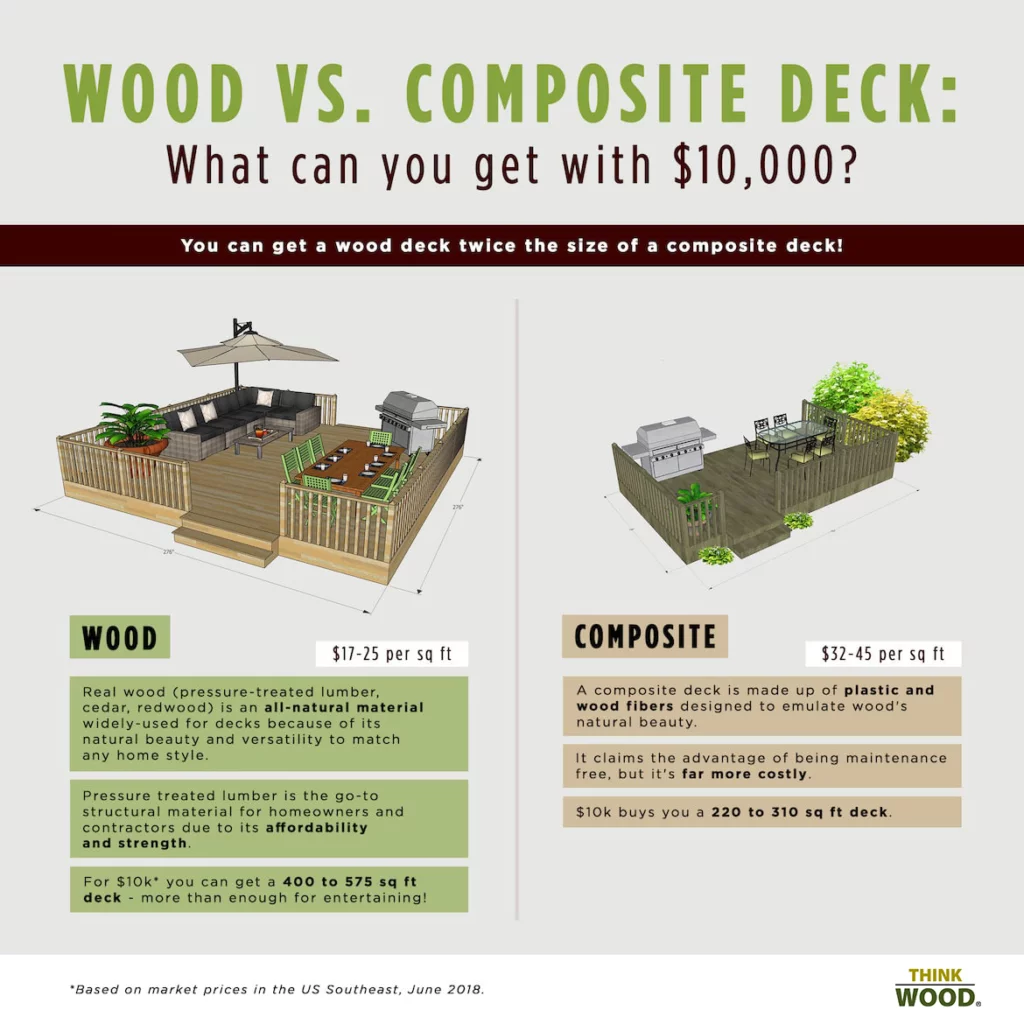
Appearance
Wood is naturally beautiful, period. Although composite materials mimic real wood, there is no replacement for the look, feel and smell of real wood. For me, there’s also the appeal of working amidst sawdust. It’s one of my favorite smells!
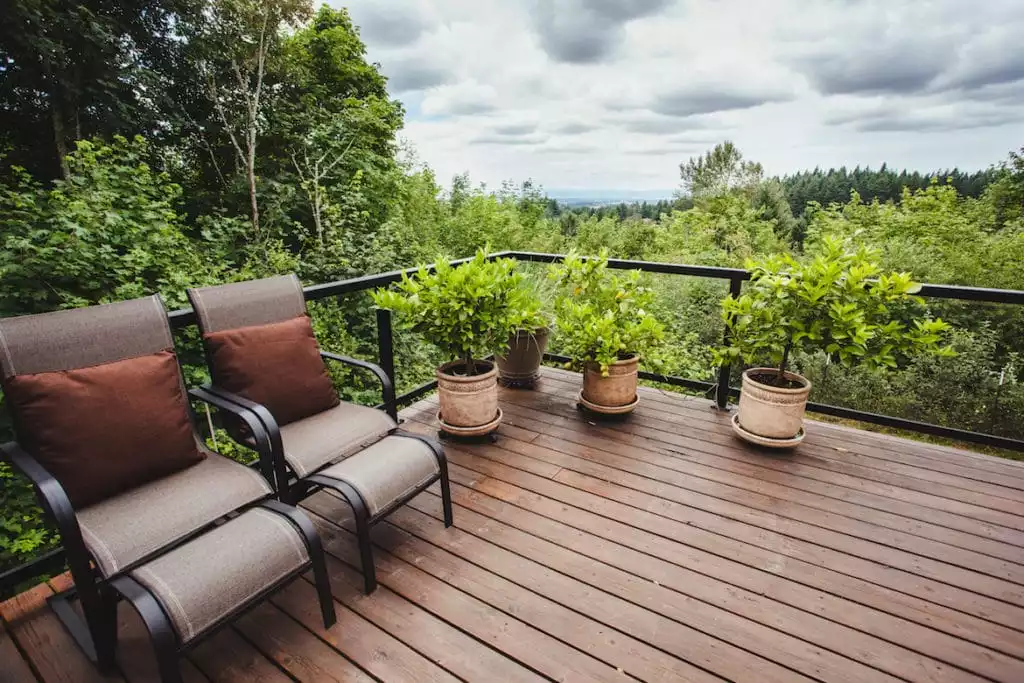
Versatility
Wood can easily be transformed by sanding and applying a new coat of stain. Since composites are manufactured, the appearance isn’t easily (or cheaply) changed. Considering the speed at which styles change, this versatility allows you to keep your deck from looking outdated.
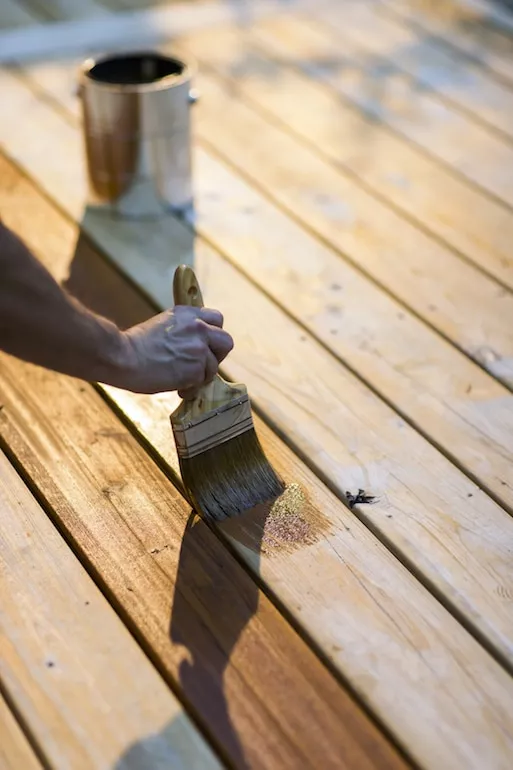
If you choose to expand your wood deck or add a shade structure, simply purchase the same wood species and your addition will look seamless. If you want to expand your composite deck, you’ll first need to make sure the shade of your original composite deck is still produced. At which point, you could be left with the choice to have your addition not match the rest of your deck or, worse, start over completely.
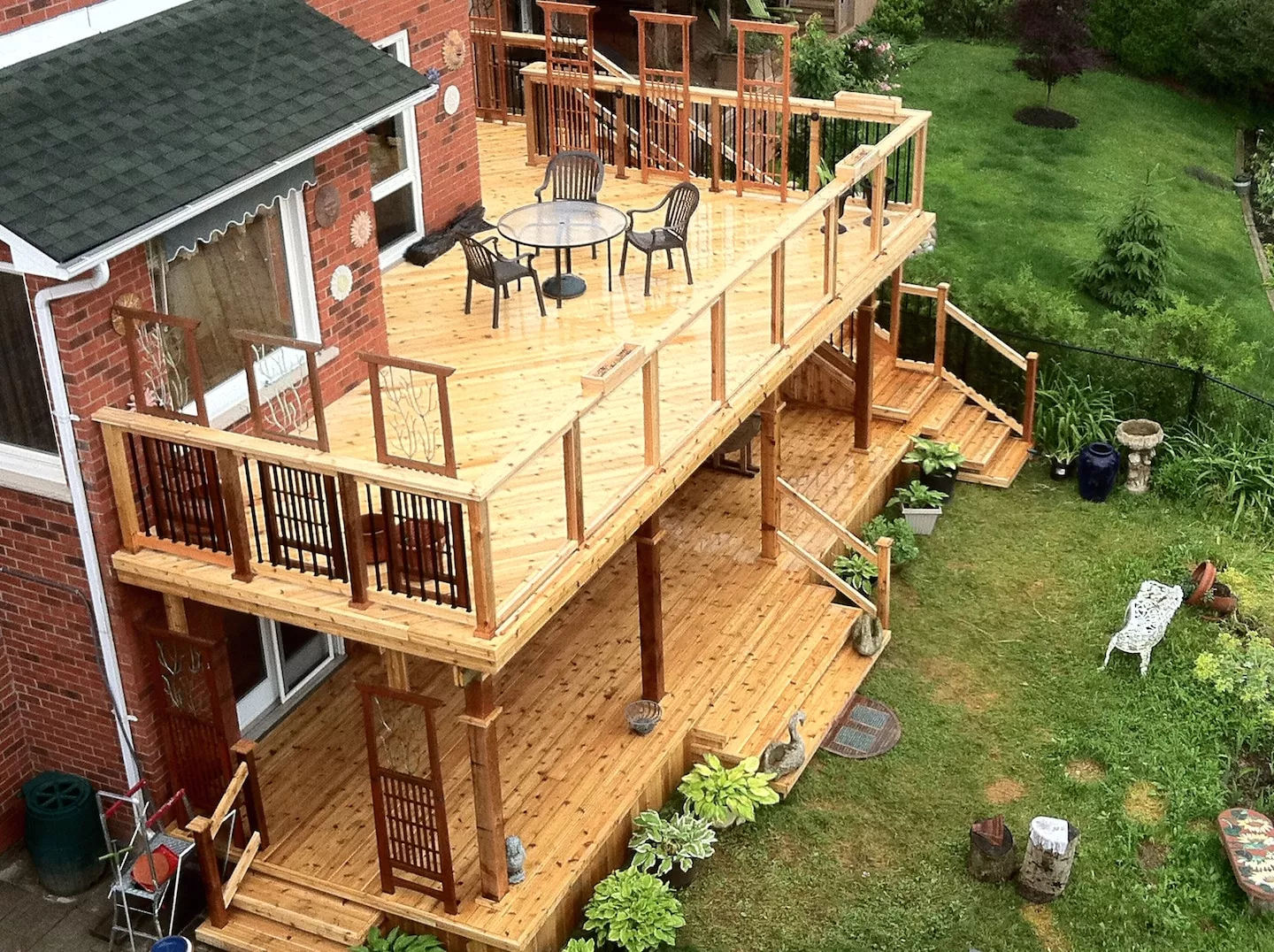
Multi Level Cedar Deck | Photo Credit: Western Red Cedar Lumber Association
After Effects
Wood is a natural, renewable resource, and therefore, biodegradable. Wood decks store carbon throughout their lives, making for a much lower carbon footprint.
Unlike real wood, composites end up in landfills. Composite decking is typically made from a combination of different synthetic materials that are processed to give the appearance of wood. Considering decks are recreational, I feel responsible for choosing a source material that doesn’t just have minimal impact on nature, but will eventually return to it as compost.
While many people purchase a composite deck because they think it requires zero maintenance, that isn’t quite true. Any structure exposed to the elements will require some maintenance.
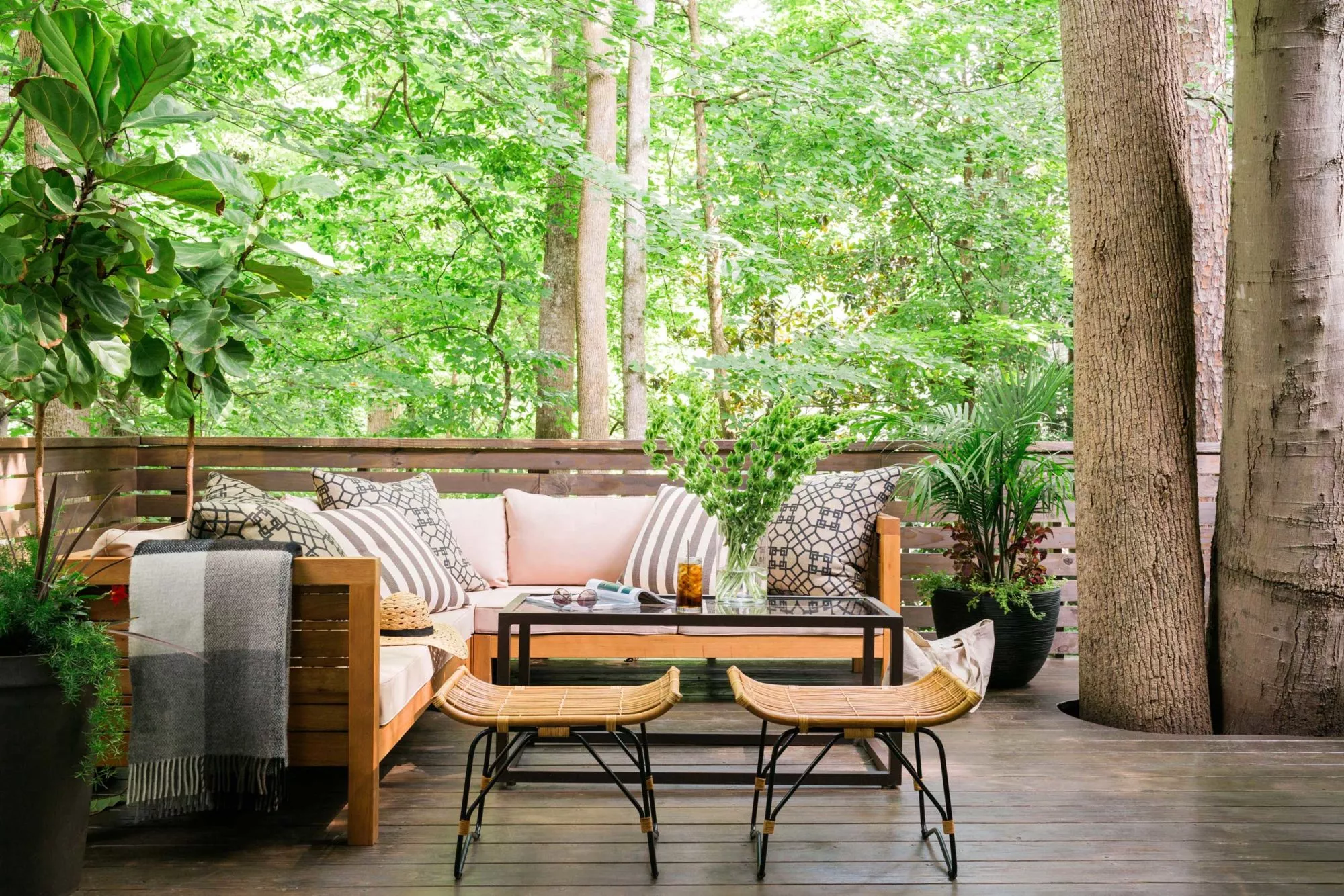
Pressure Treated Wood Deck
Ready to start building with wood?
Get more inspiration for wood deck designs in our project gallery.
Kayleen McCabe is a licensed contractor whose skills were showcased on DIY Network’s Rescue Renovation. She was also the 2009 winner of Stud Finder. Kayleen is an ardent advocate of trade careers and education. Her goal is to shed light on the rising demand for trade professionals that’s outpacing vocational training – and to help restore America’s respect for the trades in the process.
